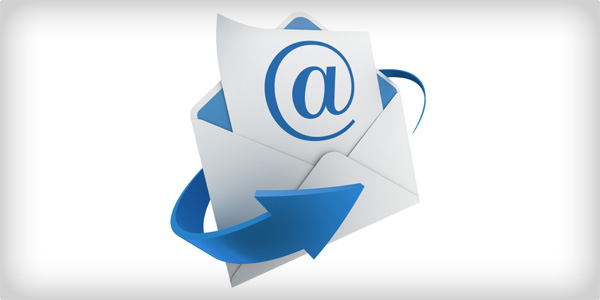Jim Kowalski of the marketing automation platform Marketo has a vivid memory of the moment he realized his company could serve the healthcare industry: “My wife recently had an outpatient procedure at one of the best hospitals in the country. Thankfully, everything went well; and our experience at the hospital was first-class. As I drove us home and struggled toremember most of the instructions we were given post-op the marketer in me began to think about ways hospitals can use engagement marketing techniques and technologies to better improve the patient discharge experience and drive significant financial benefits at the same time.”

Marketing automation has done a lot to not only enhance the ability of marketers to reach targeted audiences with carefully crafted and customized messaging, but to allow us to envision narratives of engagement rather than single sales. The personalized communications that can result from marketing automation’s reframing of the business-customer relationship can result in truly revolutionary changes in how providers talk to patients—and can also have benefits for the bottom line.
Marketing Automation and the Challenge of the Health Sector
Marketing in the healthcare industry can be difficult because what we’re selling and what makes someone a customer isn’t as clear-cut as it is in other more commercial industries.
There are people who need treatment but haven’t gotten the information necessary to what course of action is best for them.There are others who don’t need treatment now, but will at some point in the near future, plus those who need treatment, but don’t yet know that they do. On the other hand, there are the people who don’t need treatment, but think they do, as well as those who could need it, but might be able to prevent it by taking the appropriate preventative measures now.
With all these groups, the important thing is how much information the patient has access to and how we as marketers are able to identify each group that matters. If we can get the right people the right information, and walk them through the right sequence of steps (or story), we can bring in more of the people who need treatment while saving money by reducing preventable cases and false alarms.
This process of getting the right sequence of messaging to the right segments of your customer base is what marketingautomation is all about.
Marketing Automation Defined
As healthcare marketer ReviveHealth outlines in their blog: “Marketing automation can be defined as a set of communications strategies enabled by technology that allows you connect with individuals in a personalized way, based on predetermined behaviors.”
In other words, with the capabilities of new on-the-fly data analytics, a good marketing automation platform will let you identify a particular group of prospective customers based on where they are in a particular marketing story, and then send targeted messaging to help guide them along in the next steps of that story.
The automation allows you to plan for different actions by the customer, and pre-determine a response. You can look at a number of conditions: whether they visit a website or not, whether they complete a quiz or just open it, and much more. You can then customize content for each of these pools of people: invite them to finish the quiz, send another round of information, or link them to a form to book an appointment with their doctor.
Identifying Marketing Stories and Planning Messaging Around It
An abstract discussion of stories can get a little jargony, so let’s use a practical example. If you want to identify people who may need hip surgery, you might send out an initial content marketing campaign to groups most at-risk. Let’s go with an email that gives some tips for hip health and then invites the reader to take a quiz to determine their level of need for treatment.
Using any of the marketing automation platforms that CIO.com recommends, the first thing to do is think about what customer stories you’re after, and what response you expect to see from your first contact. Basically, in this case you want to separate those who need treatment from those who don’t, and then funnel those who actually do have a need into making an appointment with a provider.
With the goal in mind, look at the possible outcomes from your messaging, think about what it tells you about the customer,and then program an appropriate response. If someone clicked through to the quiz but didn’t take it, you might want to sendthem the link again and ask them to give it another shot. If they got a “healthy” score, you could continue sending them general health tips, so that you’re on their radar for when they do need something from you. If the results were more troubling, you could invite them to call and set up a meeting with a provider.
There are many more scenarios for even this one example (ReviveHealth has a few more in their example from the same article). The key is to figure out what story a particular action indicates, and then nudge the customer towards the next steps in that story. Furthermore, marketing automation isn’t limited to just emails: you can create segments based on what page a user has visited, what location they’re accessing it from, or any other information you can collect about your audience.
Marketing Automation As a Clinical Strategy
What’s truly revolutionary about marketing automation in healthcare in particular is that it doesn’t have to be limited to simply bringing in new business. There is a lot of value in getting the right information to customers at the right time.
Difficult stages in a patient’s timeline, such as preparation for surgery, recovery, physical therapy, and maintaining quality of life after treatment can all be improved by getting people the right information at the right time. Working with providers to develop automated stories for different treatment scenarios can save staff time, and just as important, save money by reducing readmission numbers.
At its essence, that’s what marketing automation is all about: it gets timely, customized messaging to the people who should see it.
What You Can Do Right Now
- Update infrastructure to be able to accommodate automated marketing tools.
- Identify segments for which targeted messaging would be useful.
- Craft customized messaging to move customers in the right direction.
- Consider alternate uses for marketing automation in areas of prevention and continuing care.


